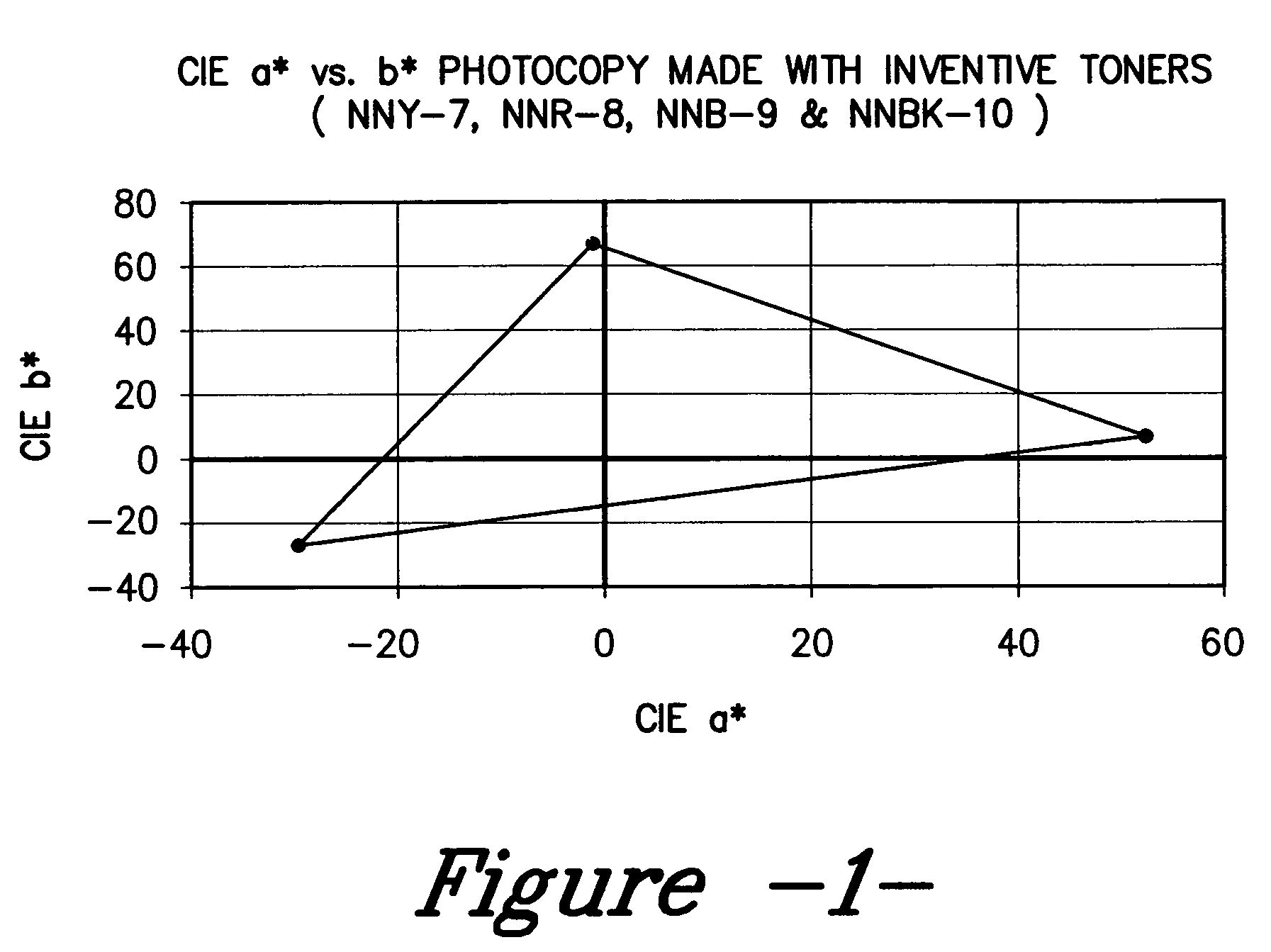Color toner and developer compositions and processes for making and using such compositions
a technology of color toner and composition, applied in the field of color toner and developer composition, can solve the problems of reducing the transparency or hue variation of the color of transmitted light, molecule may have a tendency to aggregate, and the use of pigments in toners can be difficul
- Summary
- Abstract
- Description
- Claims
- Application Information
AI Technical Summary
Benefits of technology
Problems solved by technology
Method used
Image
Examples
example 1
[0069]Aniline 2EO / 15PO / 5EO (67.5 g) is reacted with acetic anhydride (17.2 g) while heating. After stripping to remove acetic acid and excess of acetic anhydride, the resulting mixture is then allowed to react with a mixture of DMF (13.5 g) and POCl3 (11 g) in the presence of acetic anhydride (1.3 g). Upon heating to 90° C. for 2 h under nitrogen protection, the mixture is washed with hot water, and the product layer is collected and charged with a mixture of 50% caustic, water and 45% KOH, and heated for a few hours. Upon workup, the resulting residue intermediate is reacted with ethyl cyanoacetate (7.5 g) in the presence of ammonium carbonate (0.4 g). After work up, a liquid product (90% yield) is obtained with color value of 35 abs. / g / L (in methanol) at 423 nm.
example 2
[0070]To a stirring solution of water (23.0 g) and 93% sulfuric acid (35.0 g) is added with 4,4′-diaminodiphenylsulfone (10.8 g). The resulting reaction mixture is allowed to react with nitrosylsulfuric acid (40%, 31.0 g). The bis-diazonium salt solution is then reacted with a mixture of m-toluidine 2EO / 10PO / 6EO (89.8 g), water (45.0 g), and urea (2.0 g). The red reaction mixture is allowed to stir for a period of time, after which 50% caustic (60 g) was added to adjust the pH to greater than 7. The resulting product layer is separated, washed several times with hot water and stripped via rotary evaporator to give an orange oil with a color value of 27 abs. / g / L (in MeOH) at 471 nm.
example 3
[0071]Using the procedure similar to that as described in EXAMPLE 2, 2-amino-4-methylbenzothiazole (16.4 g) is allowed to react with m-toluidine 2EO / 10PO / 6EO (1 eq.) to obtain an orange liquid with a color value of 53 abs. / g / L (in methanol) at 512 nm.
PUM
 Login to view more
Login to view more Abstract
Description
Claims
Application Information
 Login to view more
Login to view more - R&D Engineer
- R&D Manager
- IP Professional
- Industry Leading Data Capabilities
- Powerful AI technology
- Patent DNA Extraction
Browse by: Latest US Patents, China's latest patents, Technical Efficacy Thesaurus, Application Domain, Technology Topic.
© 2024 PatSnap. All rights reserved.Legal|Privacy policy|Modern Slavery Act Transparency Statement|Sitemap



